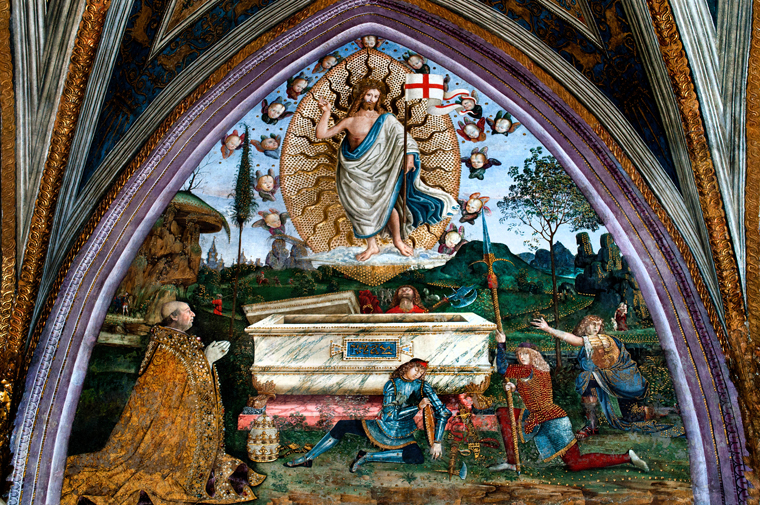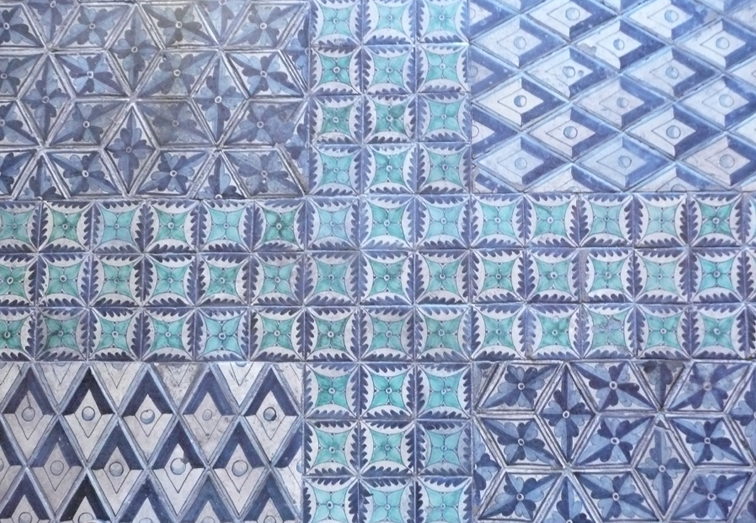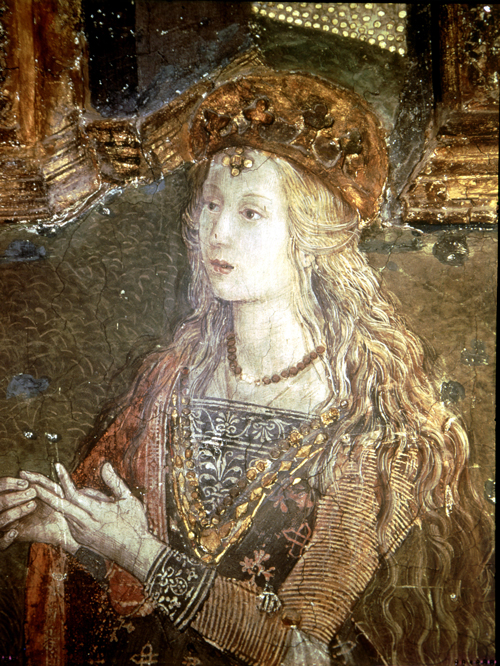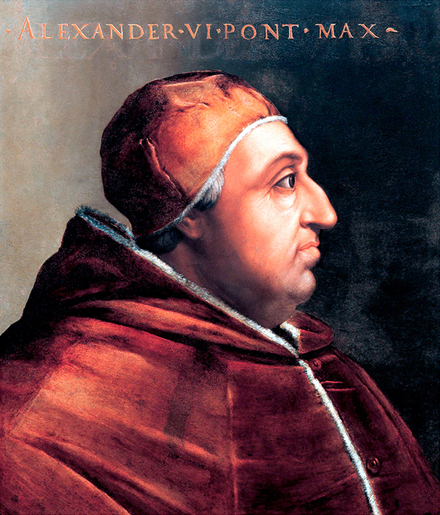This wonderful Cornish workshop and museum is dedicated to the legacy of studio pottery trailblazer Bernard Leach
Become and Instant Expert on the Borgias
Become and Instant Expert on the Borgias
9 Jun 2020
With their lust for power, fortune and fame, the Borgias were the Renaissance era’s most infamous – and intriguing – family. Sarah Dunant opens a window on their world.
1. IT'S ALL ABOUT THE CONTEXT
The Borgia family rose to power in the 1490s as the early Renaissance was at its height – yet we never talk about this dynasty in terms of art, only villainy. The truth is more complex.
If Rodrigo Borgia, Pope Alexander VI (1431–1503), was not a good guy, then neither were many around him. This was a brutal time in history. He was not the first nor the last pope to buy himself into the job, or to have a mistress or children (although he did have more than most). The Catholic Church was, at many levels, painfully corrupt. But at the same time it was a key player in financing some of the greatest new art. The building of the Sistine Chapel and new St Peter’s were both financed by imposing fresh taxes, the last of which would see Martin Luther rising up in protest, starting a religious revolution.
But what made the Borgia pope different was that he was also a foreigner – from Spain – and he went on to use his children to try and create a new dynastic power in Italy. He failed. But only just. And history, written by the victors, wasted no time in making him a worse monster than he was.

2. DON'T MISS RODRIGO BORGIA'S TOWER
Pope Alexander VI was responsible for one piece of notable artistic patronage that we hear little about. On coming to power, he built a new tower to go with an old wing of the Vatican and commissioned the Roman artist Pinturicchio (1454–1513) to decorate them both.
Though Pinturicchio's name would be overshadowed by those who came after, he was no artistic slouch, and these apartments – now used by a somewhat embarrassed Catholic Church as a backdrop to religious art – are enormously impressive.
Recent restoration has also suggested that they hide a few secrets.
In a lunette above one of the doors, the pope is seen witnessing the Resurrection of Christ (nothing new here: rich clerics often commissioned images of miracles with themselves as spectators). But close inspection of the area directly above the tomb has revealed a few tiny, naked, dancing figures.
The decoration was done in 1493/94, not long after Columbus had struck land in the New World. We know that Columbus wrote letters to the pope describing the voyage and the inhabitants he met on that first visit. Such information would have been a hot topic for discussion in the Vatican at that time. Might these just be the first visual images of men of the new world? We will never know for sure. But what a story.

3. REMEMBER TO LOOK DOWN
When it comes to appreciating Renaissance art, we spend a lot of time looking at the walls, but the Borgia apartments inside the Vatican also have the most stunning floor, which has remained untouched since it was first put down in the 1490s.
Because Rodrigo Borgia was Spanish, he yearned for certain luxuries that reminded him of his youth in Valencia. For example, he had Spanish orange trees planted in the Vatican garden, so he could smell their blossom in spring.
When it came to his floor tiles, he had them made in the state of Naples, ruled by a branch of the Spanish royal family. Their hot blue colours and geometric designs speak of a history of decoration where Spanish and Moorish cultures collide. They were all finally laid by 1496. If you ever have the chance to visit, look hard enough and you will find the date on one tile.
4. THE BIGGEST VILLAIN OF THEM ALL
There is not much one can do to rehabilitate Cesare Borgia (1475–1507), the pope’s eldest son. His quick intelligence, sociopathic charm and utter ruthlessness make him a powerful figure in history.
He leads an army across Italy, conquering a number of city states to bring them under Borgia control. In The Prince, Machiavelli will cite him as a man blessed with superior political acumen (not the same as virtue) and immense good fortune; but that good fortune will desert him with the death of his father. He will spend his last years in a Spanish jail.
At the height of his success, Cesare employs Leonardo da Vinci as an architect engineer to improve defences in his castles, and it is thought that Leonardo did some sketches of him at that time. Cesare would have been 27, and his early, much vaunted, good looks were already affected by syphilis, a new and deadly sexual disease which he, and many others at the time, had contracted when it arrived, it is thought, with the sailors and soldiers who travelled with Columbus to the New World, in the 1490s.
5. A TRULY WICKED WOMAN?

Out of all the family, Lucrezia Borgia (1480–1519) has suffered most at the hands of history. But then it is particularly easy to slander the woman at this period. She will be accused of incest, lasciviousness, poison and murder. The truth makes for less sensational copy, but is a poignant story.
Lucrezia was just 13 when her father became pope - the perfect age to be used as a pawn in the marriage game. By the age of 21 she had had three husbands. Her first marriage was annulled; her second husband was murdered and, by the end of her life, she was the Duchess of Ferrara. Though this marriage was also political, she went on to become a much-loved figure in this lovely little Renaissance state, running the government while her husband was away fighting, heading a court and even funding convents (she seems to have been the only genuinely religious one in the family).
History and art, however, offers us a doctored version of Lucrezia, as the goddess Flora with a dripping dagger. In truth, the only reliable portrait is from the Borgia apartment, where Pinturicchio uses the 13-year-old as a model for St Catherine of Alexandria (above). Take your pick as to which you would like to believe.
SARAH'S TOP TIP
When international travel is easier again, the Vatican apartments are well worth a visit. Most people rush through them on their way to the Sistine Chapel, but take the chance to pause and take them in.
Cesare Borgia campaign trails make for a great Italian road trip through the cities of the Emilia-Romagna region. Take the ancient Via Emilia – a Roman road, it runs straight as an arrow – from Bologna to Imola, Forli, Faenza and Cesena.
RECOMMENDED READS
- Cesare Borgia: His Life and Times and Lucrezia Borgia: Life, Love and Death in Renaissance Italy by Sarah Bradford
- The Borgias by Michael Mallett
- You can also read Sarah's fiction publications: Blood and Beauty and In The Name of the Family
OUR EXPERT'S STORY
Sarah Dunant is a novelist, broadcaster and critic. She has published 13 novels and gives lectures on Renaissance studies and creative writing. Her last five novels have been set within the Italian Renaissance. Among her talks for The Arts Society are The Borgias, the most infamous family in history? and Behind the walls: creativity, visions and horrors in Renaissance Italian convents.
IF YOU ENJOYED THIS INSTANT EXPERT EMAIL...
Why not forward this on to a friend who you think would enjoy it too?
Stay in touch with The Arts Society! Head over to The Arts Society Connected to join discussions, read blog posts and watch Lectures at Home – a series of films by Arts Society Accredited Lecturers, published every fortnight.
Show me another Instant Expert story
About the Author
Sarah Dunant
Article Tags
JOIN OUR MAILING LIST
Become an instant expert!
Find out more about the arts by becoming a Supporter of The Arts Society.
For just £20 a year you will receive invitations to exclusive member events and courses, special offers and concessions, our regular newsletter and our beautiful arts magazine, full of news, views, events and artist profiles.
FIND YOUR NEAREST SOCIETY
MORE FEATURES
Ever wanted to write a crime novel? As Britain’s annual crime writing festival opens, we uncover some top leads
It’s just 10 days until the Summer Olympic Games open in Paris. To mark the moment, Simon Inglis reveals how art and design play a key part in this, the world’s most spectacular multi-sport competition




